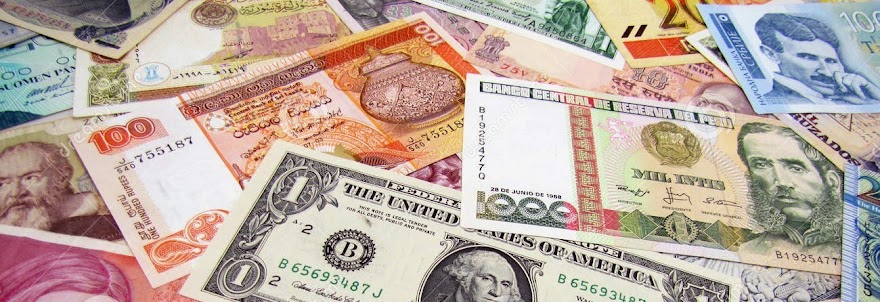Nilaish - Collector & Numismatist
IBNS grading is a Banknote grading norm and is accepted by most of the collectors and dealers around the world. If we observe IBNS grading standard for Indian Paper Money it faces following problems:
1. Banknotes prior to 1860 are mostly cancelled and cut by the bank, which is a big issue for grading. Collectors thus have no information about its grading.
2.After 1861 Government of India notes were stamped, cut portions to index the notes, which makes the grading of these notes unworthy in terms of IBNS.
3. British India notes till 1948 were stapled or stitched which degrades the note as it is almost impossible to obtain examples higher than these grades.
4. Republic India notes were stapled till 2005 or later which again makes grading principle amendable.
Definitions:
As per notes which have survived we grade notes in following classes which are mostly acknowledged in all private collections.
Good: A well worn and heavily used note. Normal
damage from prolonged circulation will include strong multiple folds and
creases, stains, pinholes, and/or staple holes, dirt, discoloration, edge
tears, center hole, rounded corners and an overall unattractive appearance. No
large pieces of the note may be missing. Graffiti is commonly seen on notes in
Good condition.
Bank of Bengal, 1825, 100 Sicca Rupees, Cut sign and cancelled = GOOD grade
Examples in Indian Paper Money: Notes prior to 1860 are mostly in this condition. Bank of Bengal notes were cut in two halves for safe transit, bank used to cut sign and cancel the notes. Similarly, other banks had similar options. The notes which are graded in this condition are very rare and not easily obtainable. (See above). Otherwise notes after 1861 were not cut normally.
Very Good (VG): A well used note, abused but still intact.
Corners may have much wear and rounding, tiny nicks, tears may extend into the
design, some discoloration may be present, staining may have occurred, and a
small hole may be seen at center from excessive folding. Staple and pinholes
are usually present, and the note itself is quite limp but NO pieces of the
note can be missing. A note in VG condition may still have an overall
not unattractive appearance. The note might have holes or ink burns as notes were hand signed and serial numbers were entered manually.
Bank of Bombay, 10 Rupees, VG
Examples in Paper Money: A very few notes prior to 1860 are intact but have ink burns and holes. Notes after 1860 of the same grade must be valued differently. As notes prior to 1860 is practically unobtainable. See above an possibly unique example of 10 Rupees note dated 1860.
Fine (F): A note which shows
considerable circulation with many folds, creases and wrinkling. Paper is
not excessively dirty, but may have some softness. Edges may show
much handling with minor tears in the border area. Tears may not extend into
the design. There will be no center hole because of folding. Colors are clear
but not bright. A staple hole or two would not be considered unusual wear in a
Fine note. Overall appearance is still on the desirable side. Indian banknotes prior to 1900s shows notes in this grade. The climate and handling norms in India during British rule has turned notes in this condition.Examples are shown below of different period notes.
Note is somewhat limp and has horizontal
and vertical folds.
VERY
FINE (VF): An
attractive note, but with more evidence of handling and wear. May have a number
of folds both vertically and horizontally. Paper may have minimal
dirt, or possible color smudging. Paper itself is still relatively crisp and
not floppy. There are no tears into the border area, although the edges do show
slight wear. Corners also show wear but not full rounding.An example is shown below:
Note the vertical and horizontal creases,
but an overall clean appearance.
EXTREMELY FINE (EF
or XF): A very attractive
note, with light handling. May have a maximum of three light folds or one
strong crease or u-fold. Paper is clean and bright with original sheen. Corners
may show only the slightest evidence of rounding. There may also be the
slightest sign of wear where a fold meets the edge. An example is shown below:
EXTREMELY FINE - Note the fairly sharp vertical
crease at center along with minor handling creases at the
upper right.
ABOUT UNCIRCULATED
(aUNC or AU): A virtually
perfect note, with some minor handling. May show evidence of bank counting
folds at a corner or one light fold through the center, but not both. An AU
note cannot be creased, a crease being a hard fold which has usually “broken”
the surface of a note. Paper is clean and bright with original
sheen. Corners are not rounded.
NOTE: Europeans will
refer to an About Uncirculated or AU note as “EF-UNC” or as just “EF”. The
extremely fine note described below will often be referred to as “GVF” or “Good
Very Fine”.
An example is shown below:
ABOUT UNCIRCULATED - Note the
corner 'dings' at the lower left front. There is a mark on the obverse
UNCIRCULATED (UNC): A perfectly preserved note, never mishandled by
the issuing authority, a bank teller, the public or a collector. Paper is clean
and firm, without discoloration. Corners are sharp and square, without any
evidence of rounding. (Rounded corners are often telltale sign of a cleaned or
“doctored” note.) An uncirculated note will have its original natural sheen.
NOTE: Some note issues are most often available with slight evidence of
counting folds (creases). Also, French-printed notes usually have a sight
ripple in the paper. Many collectors and dealers often refer to such a note as AU-UNC.
An example for UNC is shown below:
Example of perfect UNC - no pin holes
This note is compiled with the help of IBNS grading and market demand and supply.
Copyright reserved to Nilaish, Esq.















































